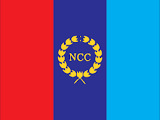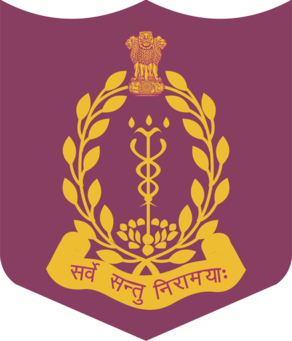
The Armed Forces Medical College (AFMC) is a leading medical training institute in Pune, India, in the state of Maharashtra. The college is managed by the Indian Armed Forces.
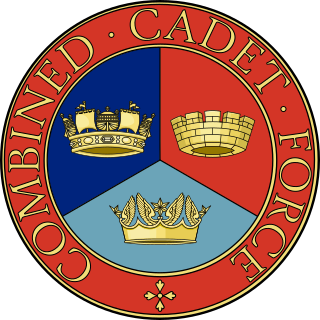
The Combined Cadet Force (CCF) is a youth organisation in the United Kingdom, sponsored by the Ministry of Defence (MOD), which operates in schools, sub divided into Royal Navy, Royal Marines, Army and Royal Air Force sections. Its aim is to "provide a disciplined organisation in a school so that pupils may develop powers of leadership by means of training to promote the qualities of responsibility, self reliance, resourcefulness, endurance and perseverance".
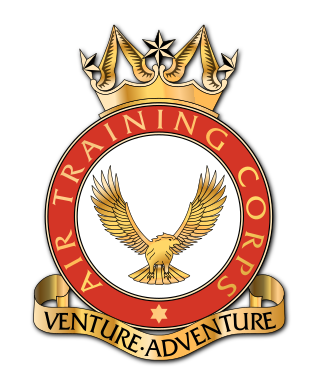
The Air Training Corps (ATC) is a British volunteer youth organisation of the United Kingdom; aligned to, and fostering the knowledge and learning of military values, primarily focussing on military aviation. Part of the Royal Air Force Air Cadets (RAFAC), the ATC is sponsored by the Royal Air Force (RAF) and the wider Ministry of Defence (MoD). The majority of Air Training Corps staff are volunteers, though some staff are paid for full-time work; including Commandant Air Cadets, who is a Royal Air Force officer as part of a Full Term Reserve Service commitment.
Officer Cadet is a rank held by military cadets during their training to become commissioned officers. In the United Kingdom, the rank is also used by members of University Royal Naval Units, University Officer Training Corps and University Air Squadron; however, these are not trainee officers with many not choosing a career in the armed forces.
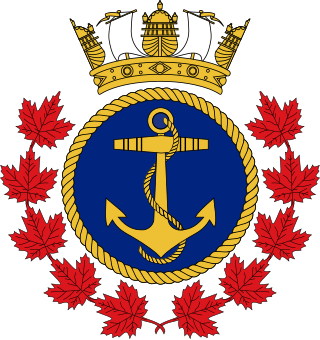
The Royal Canadian Sea Cadets is a Canadian national youth program sponsored by the Canadian Armed Forces and the civilian Navy League of Canada. Administered by the Canadian Forces, the program is funded through the Department of National Defence, with the civilian partner providing support in the local community. Cadets are not members of the Canadian Armed Forces.
Commandant is a title often given to the officer in charge of a military training establishment or academy. This usage is common in English-speaking nations. In some countries it may be a military or police rank. It is also often used to refer to the commander of a military prison or prison camp.
Colonel commandant is a military title used in the armed forces of some English-speaking countries. The title, not a substantive military rank, could denote a senior colonel with authority over fellow colonels. Today, the holder often has an honorary role outside the executive military structure, such as advocacy for the troops.

The Rashtriya Indian Military College is a military school for boys situated in Doon Valley, Dehradun in India. The RIMC is a feeder institution for the National Defence Academy, Indian Naval Academy and subsequently the Indian Armed Forces. Rimcollians, the name by which alumni of the RIMC are usually denoted, have gone on to hold the highest ranks in the Army, Navy and the Air Force of India, Pakistan and Bangladesh.
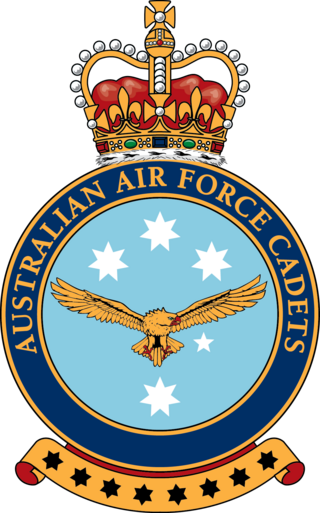
The Australian Air Force Cadets (AAFC), known as the Air Training Corps (AIRTC) until 2001, is a Federal Government funded youth organisation. The parent force of the AAFC is the Royal Australian Air Force (RAAF). Along with the Australian Army Cadets (AAC) and the Australian Navy Cadets (ANC), it is part of the Australian Defence Force Cadets.
The National Cadet Corps (NCC) is a youth organisation in Sri Lanka, sponsored by the Ministry of Defence, which operates in schools, and normally includes Army, Navy and Air Force sections. The corp is open for secondary school students on voluntary basis and its officers are government teachers and educational administrators, who serve as instructors. The Cadets are given basic military training in small arms and parades, as well as leadership training.

Rashtriya Military School, Chail is a residential school in Himachal Pradesh, India. The school's origins lie with the establishment of King George's Royal Indian Military School in Jullunder, Punjab, soon after World War I, with a donation of ₹250,000 from King George V’s patriotic fund. The foundation stone of this school was laid in the Jullunder Cantonment by King George V in February 1922, and the school started functioning in 1925. The school was moved to its present location in Chail, Himachal Pradesh, in 1960. Cadets are known as Georgians after the school's founding father.
The Hong Kong Adventure Corps is a voluntary uniformed group subsidised by the Hong Kong government and the Hong Kong Jockey Club. It was created in 1995 with ties to the British Army's Army Cadet Force and Combined Cadet Force. Like the Hong Kong Sea Cadet Corps and Hong Kong Air Cadet Corps, the HKAC exists to serve the Hong Kong community. The HKAC's values are based in those of the British Army, providing a tough and challenging training with a distinctive military tone of discipline and esprit de corps.

Sainik School Rewa is one of the 33 Sainik Schools of India. It is a purely residential school. The medium of instruction is English. Established by Government of India on 20 July 1962 at the sprawling estate known as Yuvraj Bhawan which belonged to Maharaja Martand Singh Judeo, Yuvraj of former Princely state of Rewa, the school prepares boys to join the indian armed forces. The school has contributed about 950 officers. It is affiliated to Central Board of Secondary Education and is a member of Indian Public Schools Conference (IPSC).

Rashtriya Military School, Dholpur is one of five military schools of India. It is situated in Dholpur in Rajasthan and was established in 1962 by a former Defence Minister, Krishnan Menon, to facilitate education of the children of the Defense personnel as well as the civilians. Military Schools in India were previously known as King George Royal Indian Military College.

Sainik School at Korukonda informally began on 10 September 1961. The school was formally founded by its first principal, Commander Trevor De Almeida, on 18 January 1962, when the first batch of 205 students had joined.
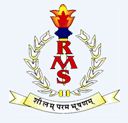
Rashtriya Military School Bangalore is a military boarding school in Bangalore, Karnataka, India. It was established on 1 August 1946 and is one of only five RMS of its kind in India; the other four being Chail Military School established in 1922, Ajmer Military School in 1930, Belgaum Military School in 1945, and Dholpur Military School in 1962. The cadets enrolled in these schools are known as Georgians, after their founder father King George VI.

The Bangladesh National Cadet Corps (BNCC) is a tri-services volunteer reserve defence force comprising the Army, Navy and Air Force wing for school, college and university students. It is the second line of defence headed by Bangladesh Army.

The National Cadet Corps (NCC) is a military cadet corps youth organisation supported by the Ministry of Defence and the Ministry of Education.
Sainik School Satara is one of the 33 Sainik Schools of India. The medium of instruction is English. Established by Government of India on 23 June 1961 at Satara. It is affiliated to Central Board of Secondary Education and is a member of Indian Public Schools Conference (IPSC).It also has Primary Sainik School Satara attached to it.
The Volunteer Cadet Corps (VCC) is a national youth organisation managed by the United Kingdom's Royal Navy and sponsored by the UK's Ministry of Defence. The VCC comprises:

